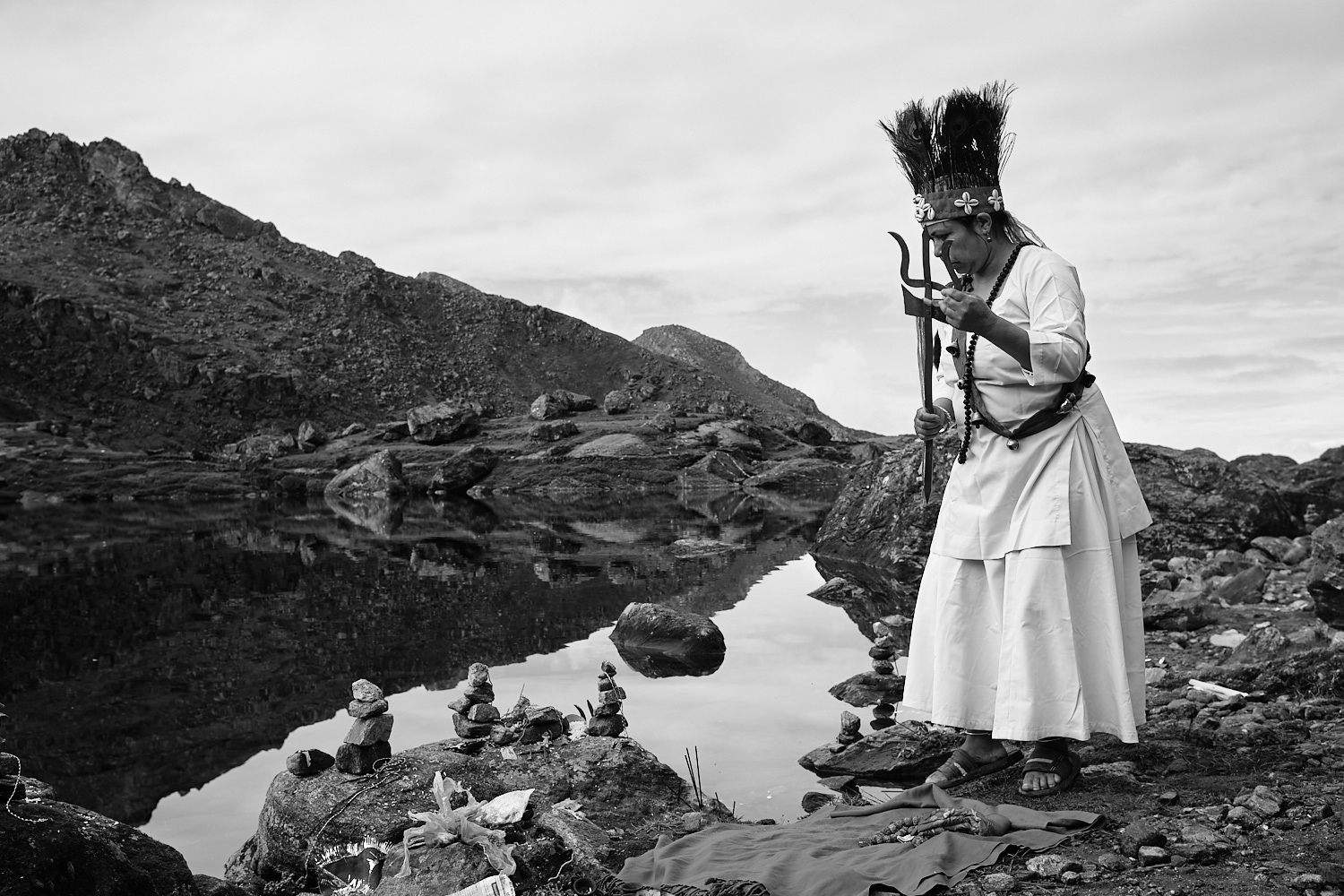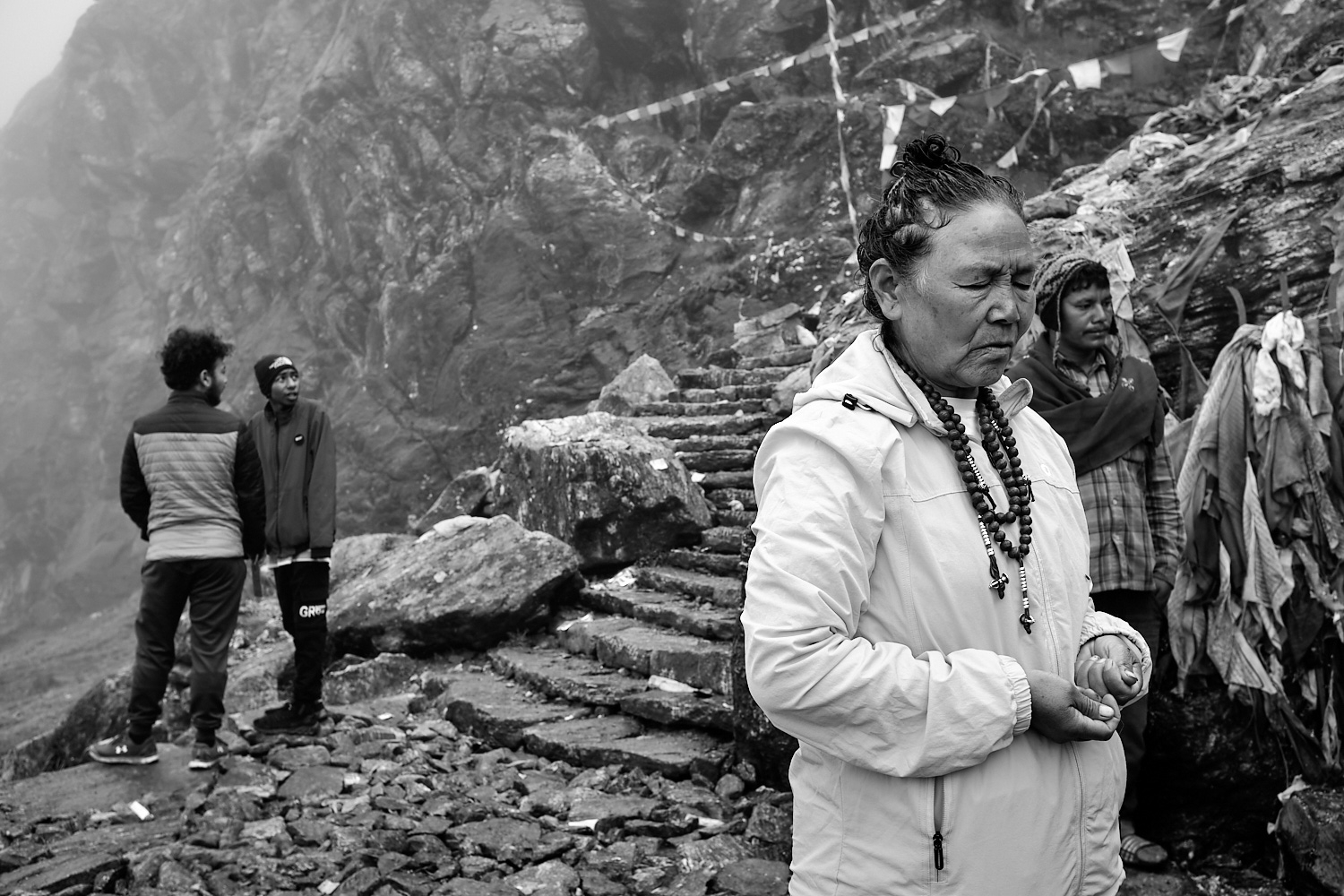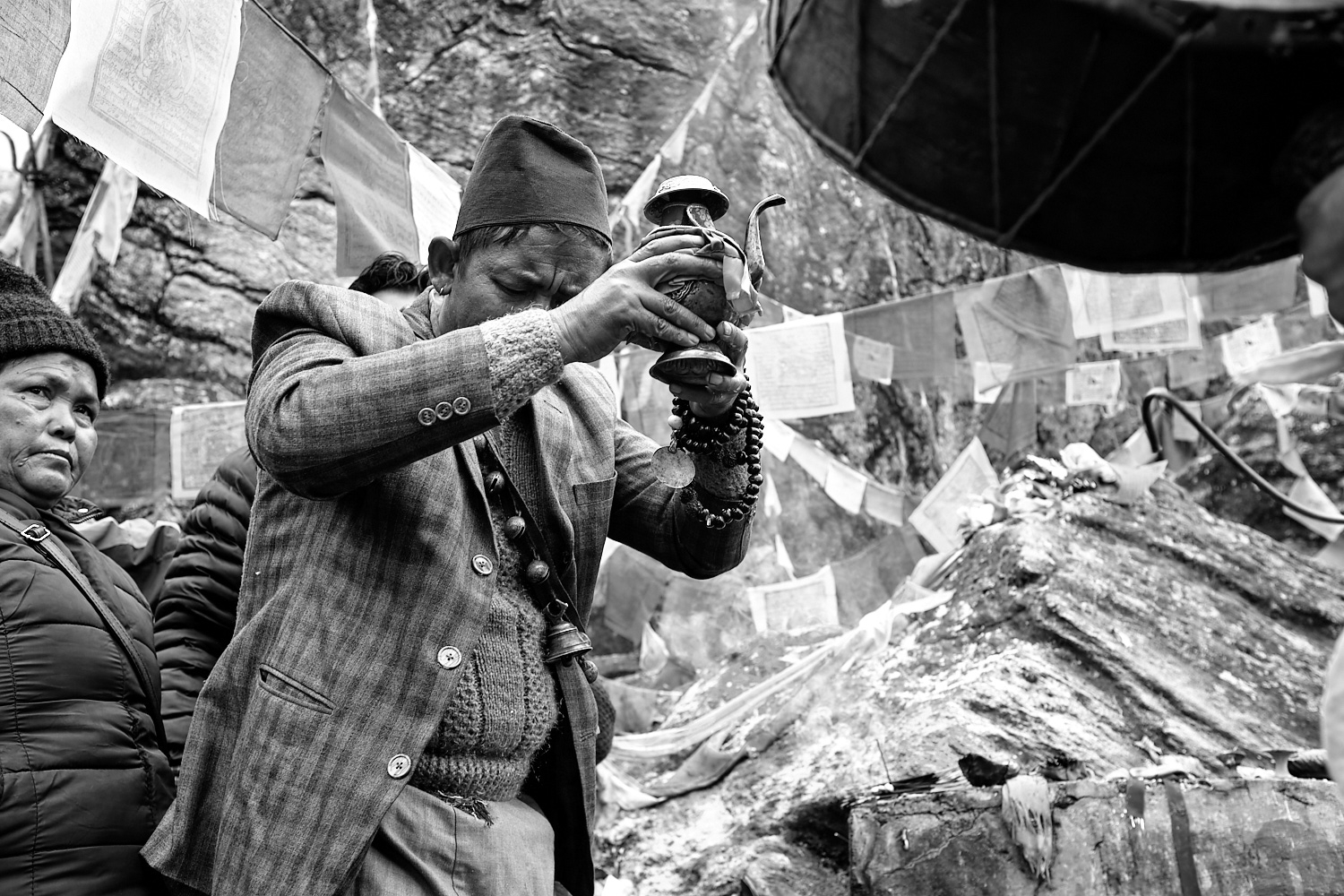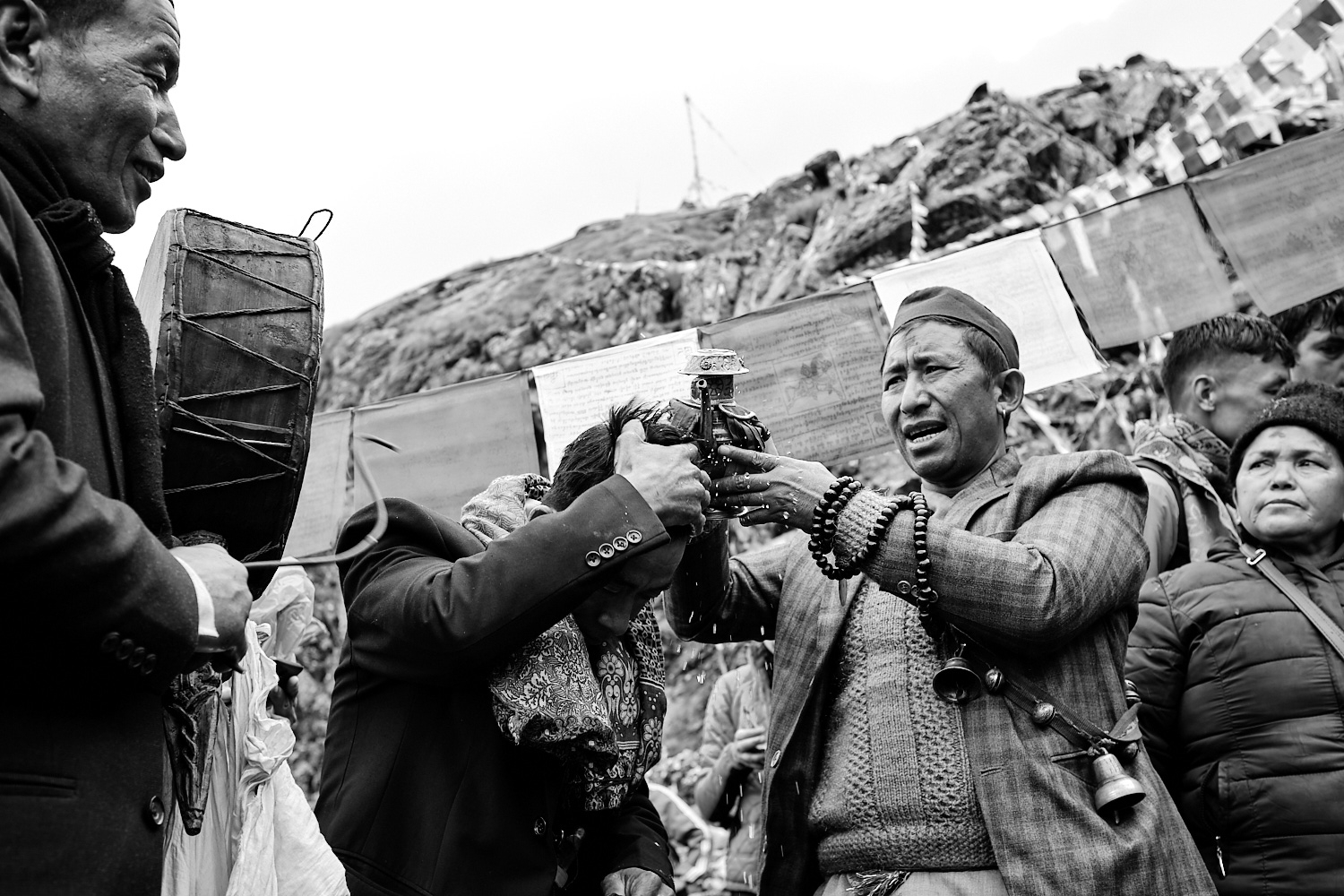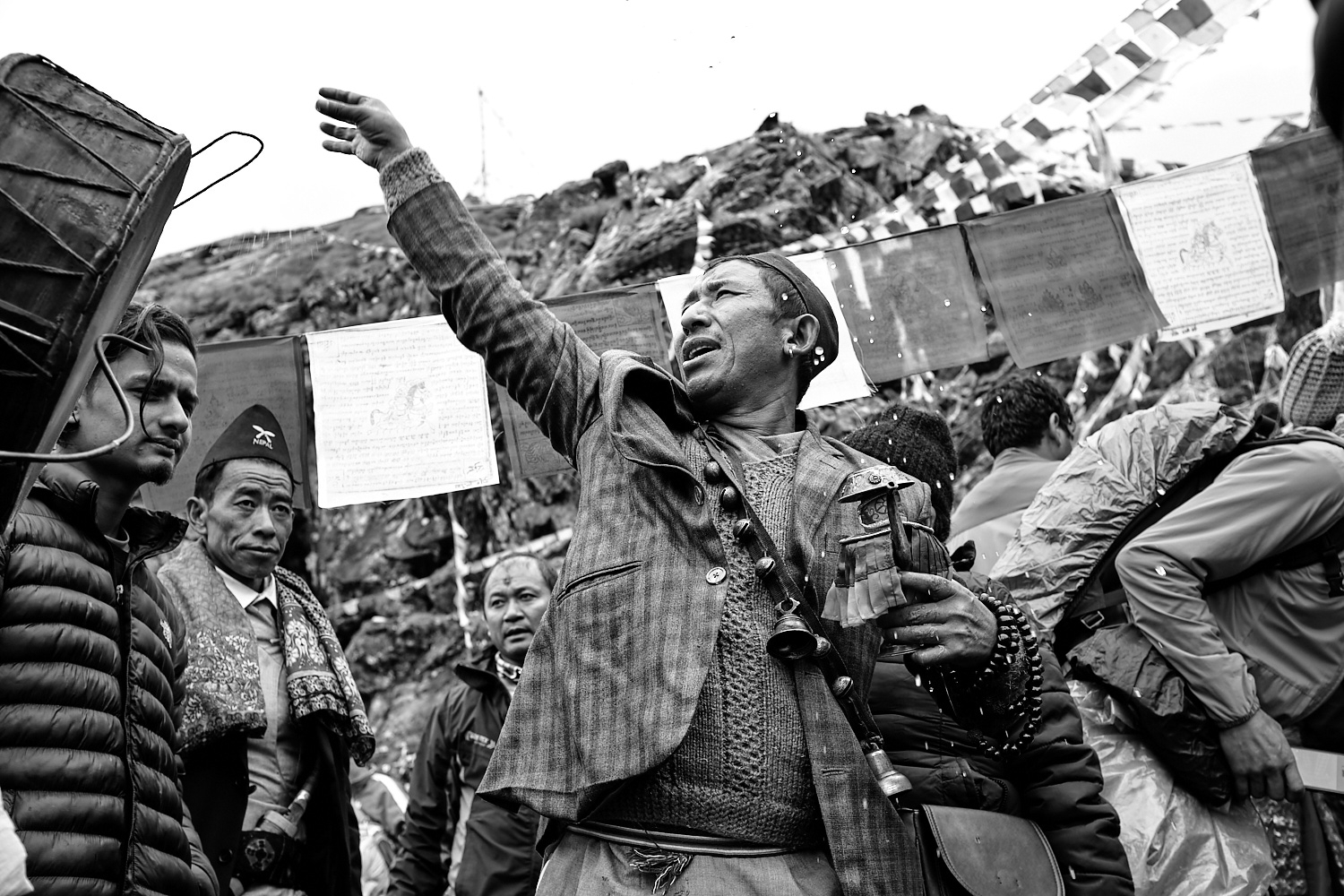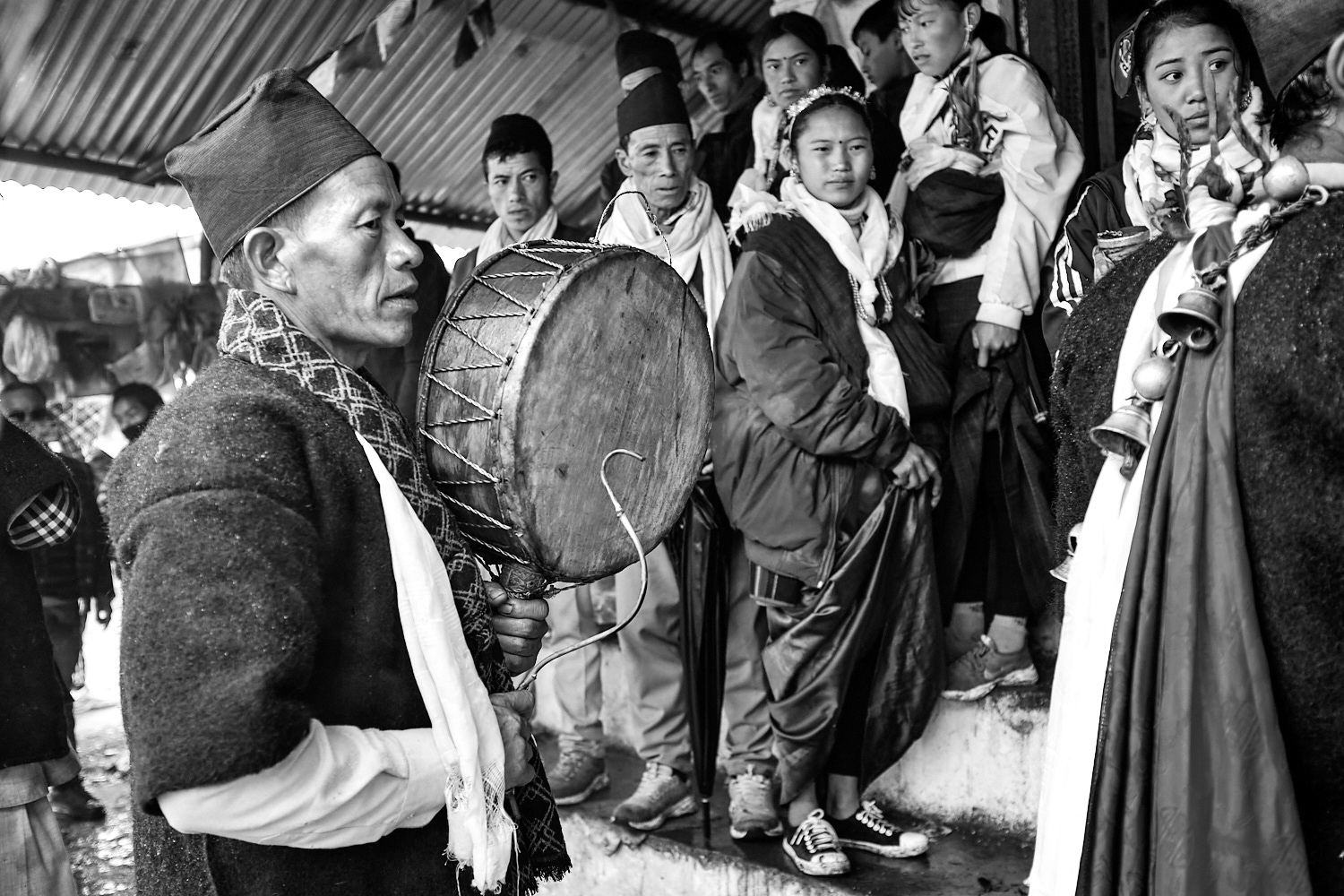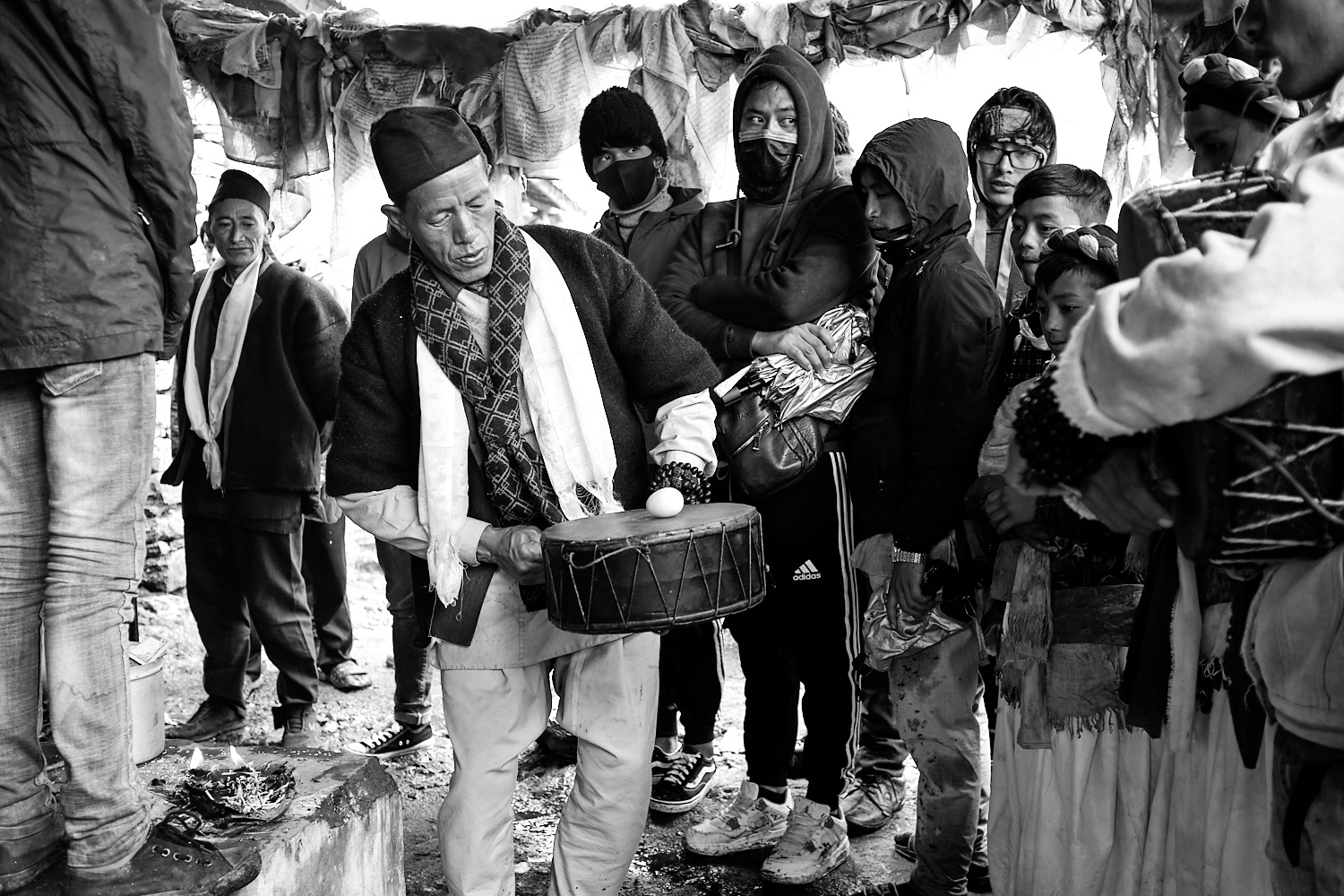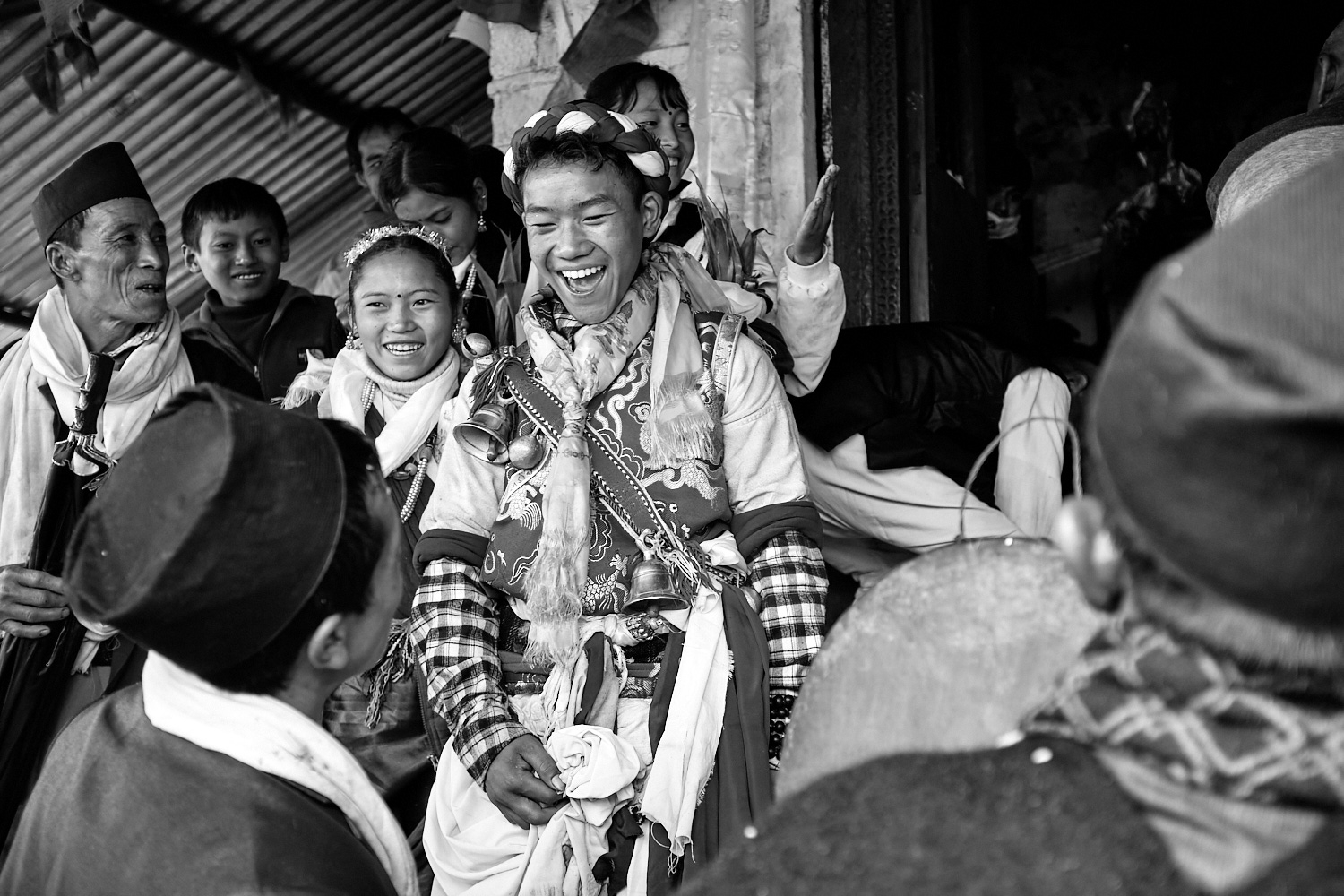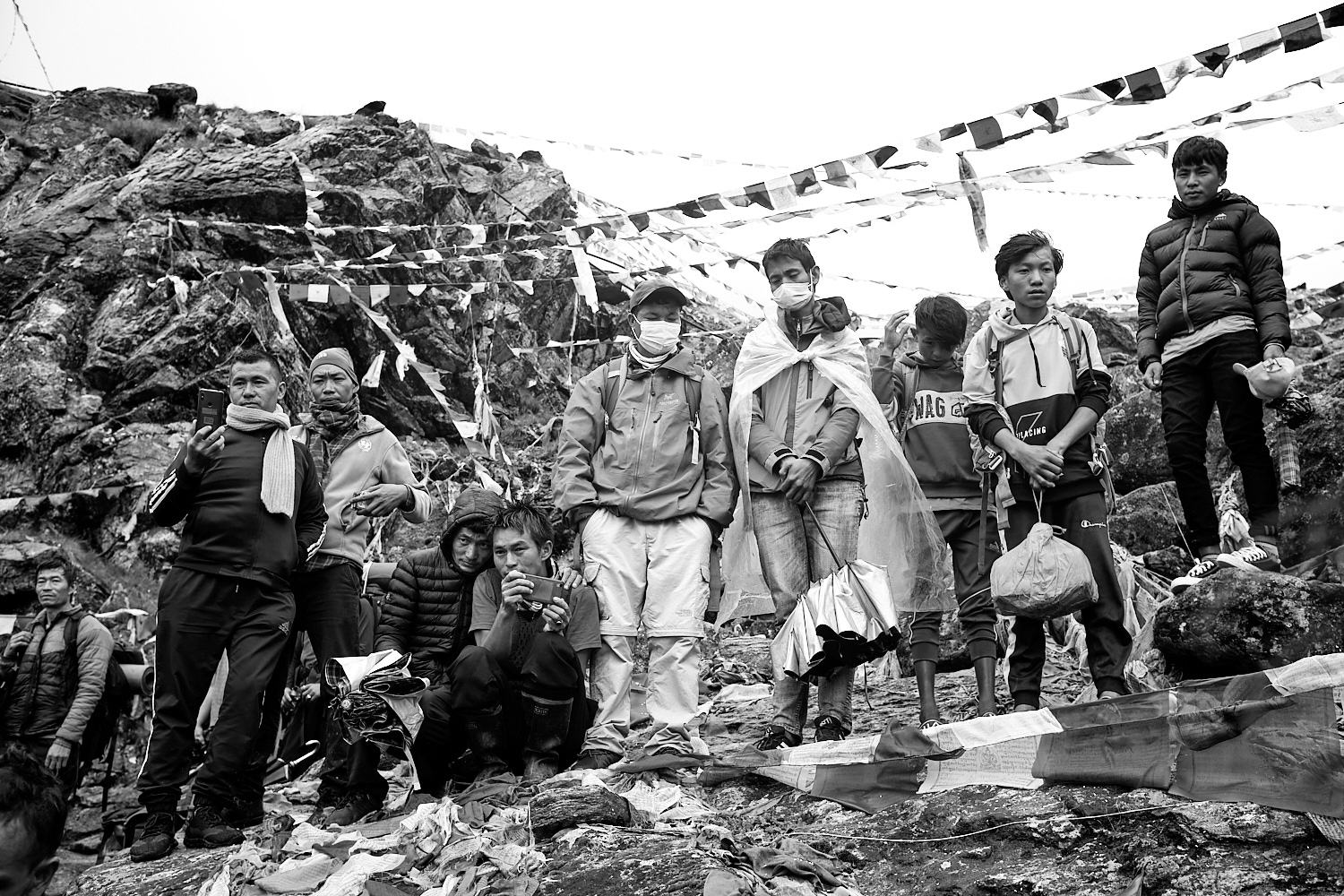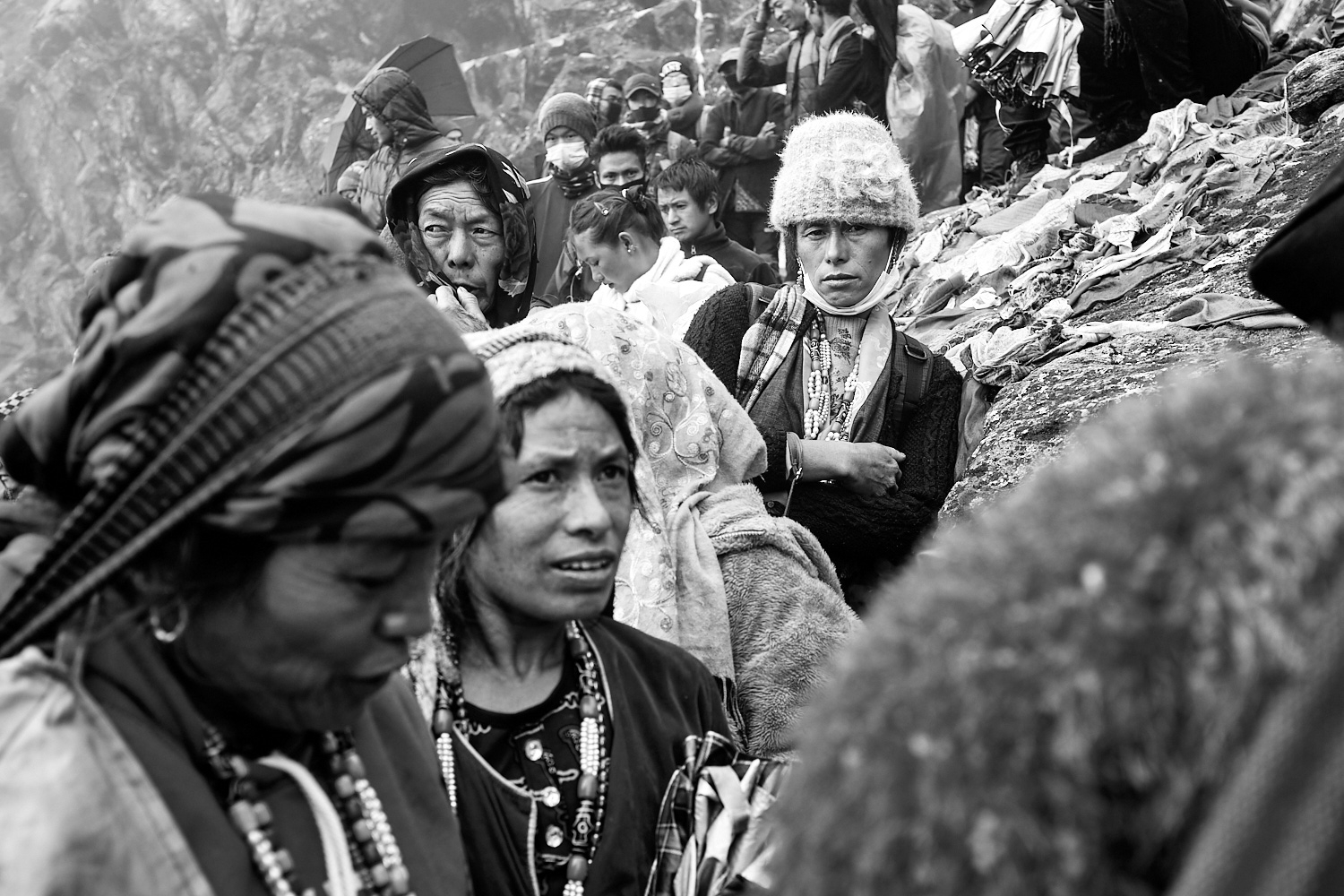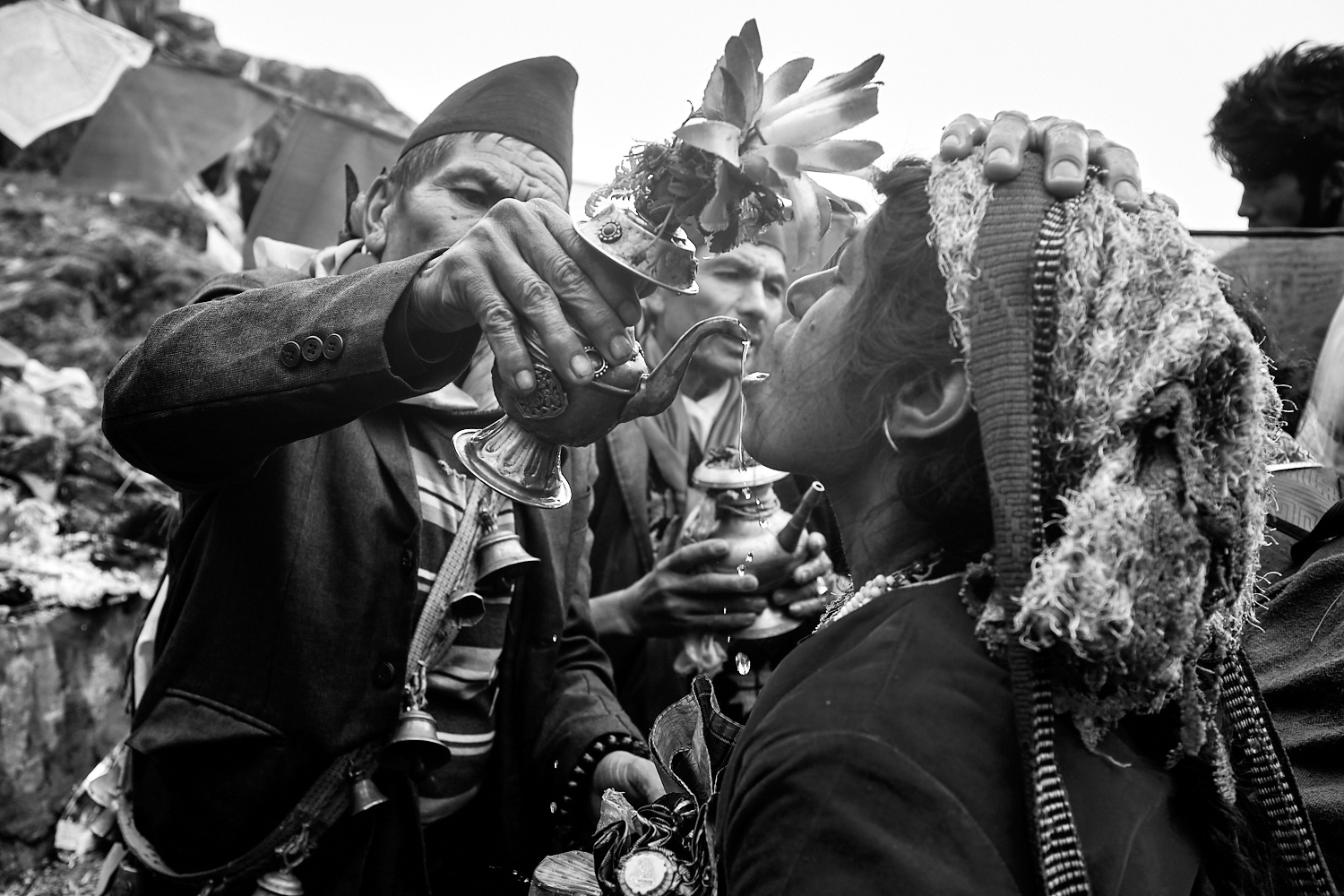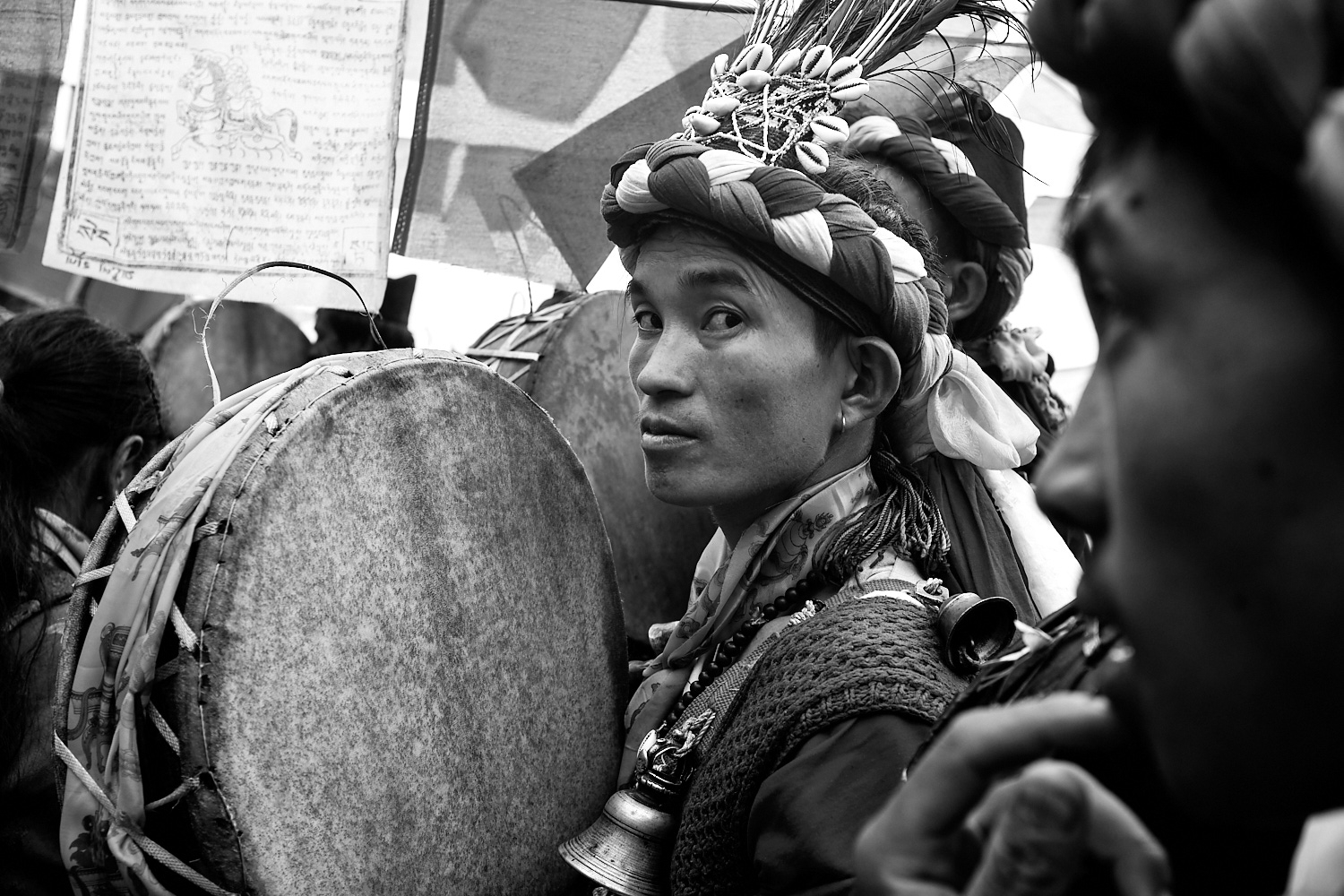A week before my planned trek to Gosaikunda, I was in Kathmandu where I was unable to get reliable information about Janai Purnima festival at the lake. “Accommodation won’t be a problem,” I was told, but I had no idea whether, if at all, there would be any rituals or celebrations taking place. Nepal was still dealing with the second wave of the pandemic, after all. In the end, I decided to take my chances and soon I was on my way to Gosaikunda – a lake that is considered holy by Hindus and Buddhists.
Although the occasion was Janai Purnima, my primary interest was in the shaman festival that takes place on the same day. I came to know about the shaman festival a month ago and since then, I was planning to take this opportunity to visit Gosaikunda and document it. My knowledge about shamanism was and remains limited and this was a chance to observe and possibly learn more.
On the first day of the trek in Deurali, I had heard an elderly man on his way to the lake saying that the festival was cancelled, according to an announcement he had heard on the radio. But then a man I met the next morning told me there will be ‘jhankris’ and ‘dhamis’ – Nepali terms referring to healers and shamans – at the lake, adding more to my confusion. When I reached Gosaikunda four days before the full moon night, the owner of the lodge sounded sure about ‘thousands of people’ arriving on 21st August. “For three days, you can stay in the room. On the fourth day, you will have to move to a tent,” he told me.
With conflicting information at hand, I was unsure whether there will be any ‘festival’ this year. My only encounter with shamans so far had been in Cholang Pati during the trek. Before I could catch them again at the lake the next morning, they had left.
I didn’t have to wait much to come across more shamans. On my second day in Gosaikunda, I was able to observe a female shaman as she performed rituals first at the lake and then at Trishul Dhara. Unlike the male shamans I saw, she did not carry a drum. She had a trident on which she tied a white and a red scarf. On the forehead she wore a red cloth with cowrie shells attached to it. She took a dip in the lake and climbed up to Trishul Dhara – where Gosaikunda originates and eventually merges into Trishuli river via Dorkhu Khola and Tadi Khola.
On the morning of Janai Purnima, I visited Trishul Dhara again where I observed more shamans performing rituals. A group of shamans played a traditional shamanic drum called ‘dhyangro,’ sang, and danced.
The shamans were wearing black cap known as ‘bhaad-gaaule’ and carrying khukri knife. Their rituals included a shaman filling up a decorated jug with holy water from Trishul Dhara and pouring it onto the palms and heads of devotees. Then he sprinkled water from the jug around before leaving the site while still playing the drum and chanting.
Back at the lodge, people were arriving in large numbers. By the early afternoon, the lodge was full. “Is there a room?” Everyone coming there was asking the same question and they were told there was none. Even the tents nearby were occupied, narrowing my own chances to find a place to sleep at night.
On my way to the Shiva temple by the lake, I saw mules and donkeys carrying gas bottles, large cooking utensils and other things. In the open space near the temple were hundreds of people – all dressed in colourful clothes. With umbrellas over their head, people were singing and dancing as spectators observed them. It was raining but not strong enough to break the festive spirit.
Just nearby were some shamans who played dhyangro drums while circumambulating the temple. People of all ages observed as they continued.
Later on, a ritual or what looked like a competition took place. Each shaman had an egg and some rice put on their drum. It seemed like the goal was to play the two-sided drum while circling the temple and keep the egg on it as long as possible. In the end, whom appeared to be the oldest shaman won. A man picked the egg from the drum and threw it at the top frame of the temple door as people reacted – first with disgust and eventually with laughter.
The group of shamans made room as another group of shamans arrived, dressed in ‘jama’ (a long white garment) with bells around their torso. They all wore long necklaces made of colourful stones and rudraksha. Some of them had peacock feathers on their forehead.
After circling the temple, they began walking towards Trishul Dhara. The drum beats, songs, and dance continued. People in large number followed along.
Rituals were performed at Trishul Dhara by the shamans. This group also consisted of students who are said to ‘graduate’ on this day. In the end, a shaman used a metal jug to pour water in devotees’ palms and mouth and sprinkle it around. After this, the shamans left the temple and circled the lake. The sound of chants, drums, and bell chimes continued to be spread across the landscape.
As the sunset neared, I returned to the lake. Like the rest of the day, devotees were seen taking a dip and performing prayers. It is believed that bathing in Gosaikunda lake washes off one’s sins. At the lodge – inside and out – were hundreds of people. At night, many of them were allowed to sleep in the dining area. Having no idea where to go, I sat outside under where it constantly drizzled and cold wind was catching up.
People continued to reach or leave the lake even past midnight. Cups of black tea were still being passed around. Slowly, the activity seemed to have came to a halt.
One of the men from the lodge came to me as wondered how the night will be spent. He told me I could adjust with other on the upper floor. A few dozen people were sleeping on the floor upstairs. A dim bulb burnt just about enough As I spread myself on the only space left on the floor and tried to ‘adjust’ for the night, I could hear the sound of the drums and songs being sung by the lake.
On my visit to the loo that night, I noticed how the cloudy sky had turned clear. The gorgeous full moon accompanied by some stars shone bright, before quickly shying away once again and hiding behind the clouds.

With the sight of the full moon, my visit to Gosaikunda was now complete. After spending a night switching sides and pretending to sleep, I was on my way towards Syapru Besi the next morning.
“There weren’t even one-third of people this time due to the pandemic,” said Bhiru – a woman I met near Mukharka.
But for me, it wasn’t about the number of people. It was an experience I was grateful to be a part of. “It was worth it,” was all I could think of along the way, still surprised at my ability to trek all the way and back.
